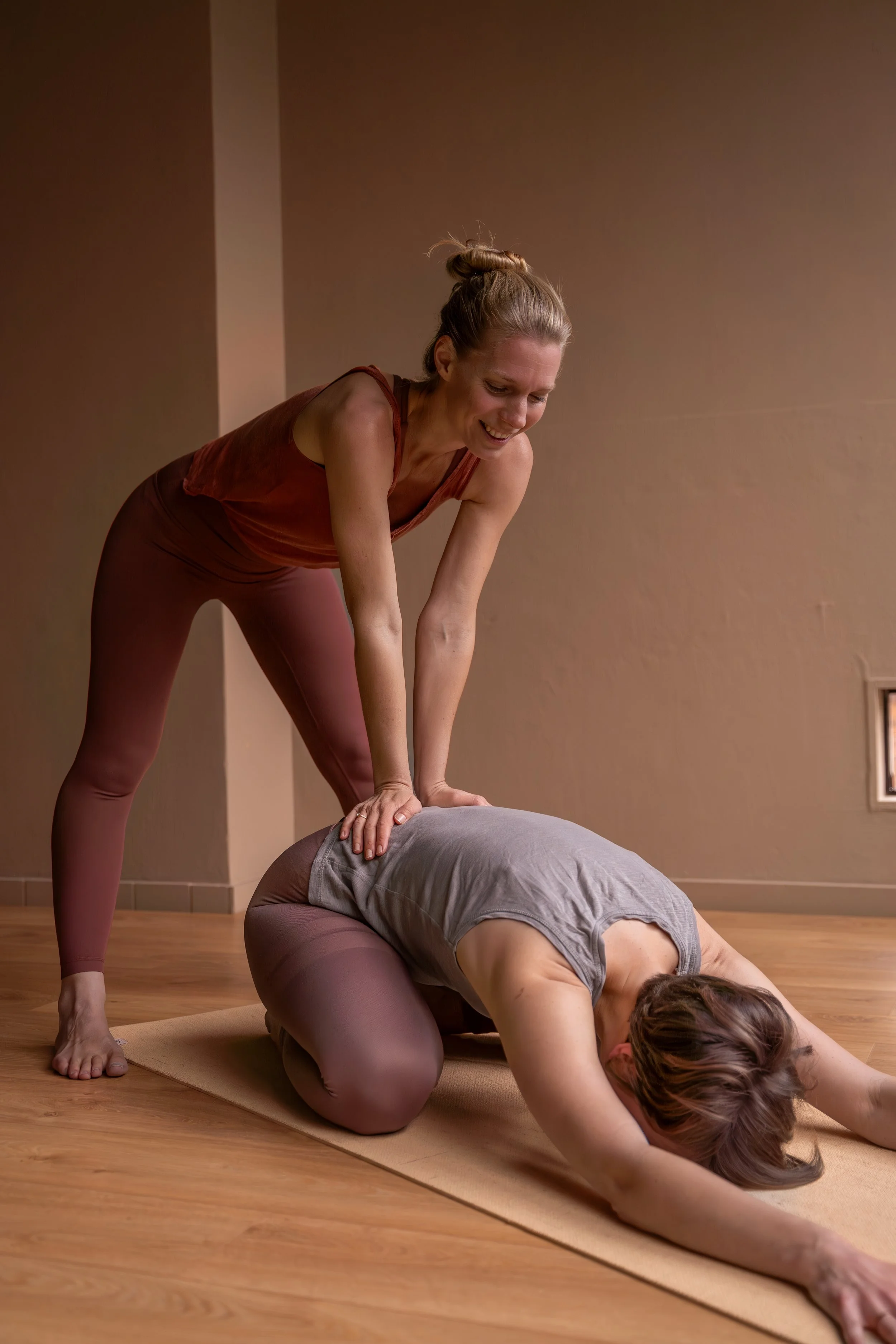Meet the edge, and soften
In yoga, we often hear the phrase “meet your edge and soften.”
It’s whispered in yin classes, spoken gently as we hold a pose, offered as guidance for life itself. But what does it really mean?
When we talk about meeting the edge, we’re not just speaking about the body. The edge exists everywhere, in the stretch of a hamstring, in the boundaries of the heart, in the limits of what the mind can hold. It’s that threshold where the known ends and the unknown begins.
It can feel like expansion, awakening, or it can feel like fear. Because the edge is where we encounter truth. But before we can meet it, we first have to know it. And that’s not as simple as it sounds.
Many of us move through life unaware of where our true edges are. We cross them long before realizing it, pushed by expectation, ego, habit, or the invisible pressure to be somewhere other than where we are. We think growth means stretching further, opening wider, moving faster. Yet, when we push beyond our capacity, even in the name of growth, we don’t expand, we contract. The nervous system tenses, the heart closes, the body resists.
So often, we confuse meeting the edge with overstepping it.
Because being at the edge is not always a safe place to be. It can trigger deep sensations, physical and emotional. And if we’re not ready to hold what arises there, the experience can overwhelm us.
In those moments, softening is not possible. And that’s because softening cannot be done. It’s not something you decide or perform. Softening is not an action, it’s an allowing.
It’s what happens naturally when we stop forcing, when we start to truly listen, when we begin to feel safe enough to stay.
To soften is to let go of the idea of progress. It’s to release the image of where we think we should be, in the posture, in our life, and to meet what is actually here.
Sometimes, that means stepping back from the edge. Finding the place just before it, where presence is still possible, where safety still lives. Because awareness can only unfold where there is safety. Only from that grounded place can we slowly, gently, begin to explore the boundaries of our being.
This process is not linear; it’s more like a dance. We approach, we sense, we listen, we pause. We move a little closer, then step back again. Each time we come near the edge, we learn something new about what we can hold, and what still holds us.
There is a subtle invitation of yoga: to approach the edge, gently, getting to know out tendencies without shocking ourselves back into old patterns. To stay curious, to come close enough to feel the aliveness of discomfort, but not so close that it overwhelms.
Each time we explore the edge gently, something begins to shift. The edge softens. The boundary moves. What once felt impossible begins to open, not because we pushed, but because we stayed.
This is what it truly means to soften. It’s not a passive surrender, nor an active release. It’s what happens when presence meets resistance, and holds it tenderly enough for it to dissolve.
So the real practice is cultivating the sensitivity to know where we are in relation to the edge. To be deeply honest with ourselves, not driven by ideas of what should be, but anchored in what is.
In the posture, it’s learning to listen to the quiet invitations of the body, rather than the loud instructions of the mind.
In life, it’s becoming aware of the roles we play, the expectations we chase, the images we hold of who we think we need to be.
To meet the edge is an invitation to listen more closely. To recognize the difference between resistance that protects, and resistance that invites. Between what feels alive and what feels unsafe. Between the voice that says “go further” out of curiosity, and the one that whispers it out of fear of standing still.
Because the truth is: the edge is never fixed. It moves as we move, it breathes as we breathe. The moment we meet it with awareness, it begins to shift, not because we forced it to, but because our relationship to it changes. What once felt unbearable can, with time and tenderness, become a space of ease. But that softening never comes through striving. It happens through presence.
Through awareness.
Through safety.
Through deep honesty, the kind that doesn’t ask for progress, only truth.
So when you hear “meet your edge and soften,” perhaps remember this: Softening is not a command, it’s not something the mind can order the body to do. It’s a consequence, a quiet unfolding that happens when we stop trying to control what is.
Softening arises in the moment we stop forcing ourselves to be somewhere else. It’s what happens when awareness becomes intimate enough with the present moment that resistance no longer needs to protect us.
Because the real transformation is not found in pushing past the edge, it’s found in how we meet ourselves as we approach it. In the honesty with which we listen, in the patience with which we stay. It’s in the willingness to be exactly where we are, without escaping, without performing, without rushing toward the next version of ourselves.
That’s where the softening begins, not as an act of doing, but as a quiet remembering of what happens when presence is enough.
